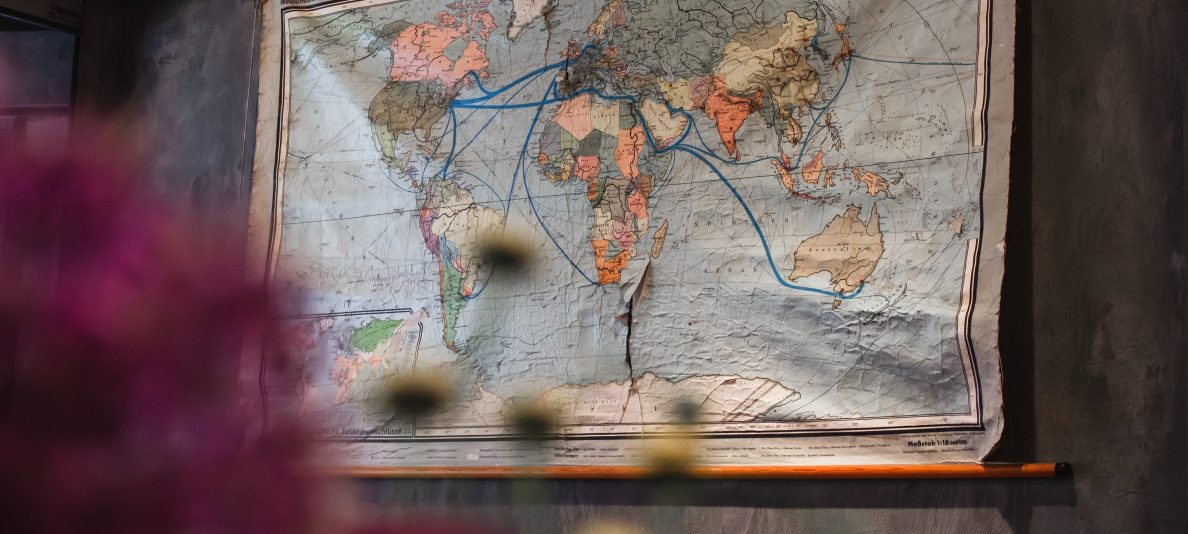
Have you every been to GetReligion? Edited by columnist Terry Mattingly, it’s a site that covers news coverage of religious issues. The authors, journalists themselves, point out areas where media personnel ignore or play down the spiritual aspects of news, fail to pursue spiritual leads when they are uncovered or hinted at (they call those “holy ghosts”), or demonstrate an ignorance of things religious. On the other hand, they also draw attention to journalists who show a keen understanding of religion and its impact.
The title of the site comes from a former senior political analyst at CNN, William Schneider, who once said, “On the national level, the press is one of the most secular institutions in American society. It just doesn’t get religion or any idea that flows from religious conviction.”
GetReligion wasn’t set up to target today’s much-referenced idea of “fake news,” as the blog’s origin in 2004 easily predates Donald Trump’s accusations. Its authors are also too broad and nuanced in their viewpoints to simply parrot political (or presidential) perspectives. And the stories they comment on reach well beyond the boundaries, and national concerns, of the US.
Every so often, GetReligion writers delve into their “guilt files,” where they keep stories that they’ve wanted to write about but haven’t gotten to yet. I have my own guilt file for GetReligion, as over time, I’ve collected bookmarks from their site for posts that I’d like to comment on, all of which deal with cross-cultural issues.
Here are a few of them. If you’ve not been over there before, may these serve as entry points into the territory of GetReligion.
“Should Amazon Tribes Be Allowed to Kill Their Young? Foreign Policy Editors Aren’t Sure” (June 6, 2018)
Julia Duin’s subject is a Foreign Policy article that discusses a bill currently under debate in Brazil. If passed, the law will aim to stop indigenous tribes from committing infanticide and killing certain older children. That’s because, writes Cleuci de Oliveira, some Amazon tribes in Brazil see disabled children, the children of single mothers, twins, and children who identify as transgender as “bad omens” and believe they should not be allowed to live.
Not only is this practice controversial, but so is the law opposing it. On one side are those who agree with YWAM missionaries Marcia and Edson Suzuki. The couple helped formulate the bill and have founded a nonprofit to save endangered children from death. On the other side are those who see child-killing as a part of the tribes’ cultures and, as such, something that should be protected. The Brazilian Association of Anthropology says that the law would continue a history of colonization and violence toward indigenous peoples, “the most repressive and lethal actions ever perpetrated against the indigenous peoples of the Americas, which were unfailingly justified through appeals to noble causes, humanitarian values and universal principles.”
Duin wonders, what with today’s atmosphere of advocacy journalism, why Foreign Policy seems to play it down the middle rather than taking the side of the disabled children. She asks, “Isn’t infanticide one of those issues that doesn’t require debate?”
“Reporting on the Unthinkable: Ancient, Multicultural Roots of Female Genital Mutilation” (June 9, 2018)
In this post, Terry Mattingly highlights an essay in The Media Project on the violent and oppressive practice of Female Genital Mutilation (FGM), writing, “Reporters and editors will want to file the information, and the sources, for future reporting projects on this issue.” Mattingly cites several “stunning facts” from the article, written by Jenny Taylor, which include the following:
- FGM predates both Christianity and Islam, with Egyptian mummies showing clear signs of the practice.
- In areas of Sudan without access to antibiotics, up to one-third of girls who are subjected to FGM will die.
- UNICEF reports that 200 million women and girls living today have undergone FGM, with more than half living in Egypt, Ethiopia, and Indonesia.
- In Tanzania, more Christians than Muslims practice “female circumcision.”
- Even though FGM has been outlawed in the UK since 1985, no prosecution against it has succeeded. Tayor writes that this is because “the West is slow to tackle it for fear of being accused of racism.”
And chief among the article’s sources is Ann-Marie Wilson, founder of 28 Too Many, a British nonprofit with the goal of eliminating FGM in the 28 countries that allowed it at the time the charity was formed. (Since then, six have made it illegal.)
“The root of the problem is beyond just the physical,” says Wilson, “the root is spiritual and religious and that can only be approached in love.”
“Jehovah’s Witnesses: Why Some Persecuted Faiths Grab Consistent Headlines and Others Don’t” (August 7, 2018)
“The world is inundated with sad examples of persecuted religious, ethnic and racial minorities,” writes Ira Rifkin for GetReligion. So he asks, “Why do some persecuted minorities trigger persistent journalistic attention while others do not?”
Rifkin looks at an article in The Los Angeles Times about Jehovah’s Witnesses who have fled Russia and are seeking asylum in Finland. This is the result of a 2017 decision by the Russian Supreme Court to outlaw the religion, saying that its adherents are members of an extremist group. This has resulted in persecution and the threat of imprisonment for Russian’s approximately 175,000 Jehovah’s Witnesses. Geraldine Fagan, author of Believing in Russia: Religious Policy after Communism, calls this “easily the worst attack on religious freedom in post-Soviet Russia.”
But while there has been sporadic coverage of the Jehovah’s Witnesses’ plight in the news, journalists in the west have given more attention to groups such as the Muslim Rohingya in Myanmar, European Jews, and Tibetan Buddhists. Why is that? The “short answer,” writes Rifkin, is
Groups that are relatively small and politically insignificant or are oppressed by powerful governments—Russia in the case of Jehovah’s Witnesses—get far less ongoing coverage than groups connected to globally significant constituencies. Think Christians in North Korea and China, for example.
Take a look at the rest of Rifkin’s post for the long answer.
And take a look at GetReligion for a religion-informed take on the news.
(Terry Mattingly, “The Mainstream Press ‘Just Doesn’t Get Religion,'” GetReligion, March 7, 2004; Cleuci de Oliveira, “The Right to Kill: Should Brazil Keep Its Amazon Tribes from Taking the Lives of Their Children?” Foreign Policy, April 9, 2018; Jenny Taylor, “Fighting FGM Is a Spiritual War,” The Media Project, May 2018; Sabra Ayres, “Facing Religious Persecution in Russia, Jehovah’s Witnesses Find Refuge in Finland,” The Los Angeles Times, August 3, 2018)
[photo: “Newsstand,” by Thomas Hawk, used under a Creative Commons license]






 As I’ve read, and watched, more about the Syrian refugee crises, I came across two powerful videos. I decided not to include them in my
As I’ve read, and watched, more about the Syrian refugee crises, I came across two powerful videos. I decided not to include them in my